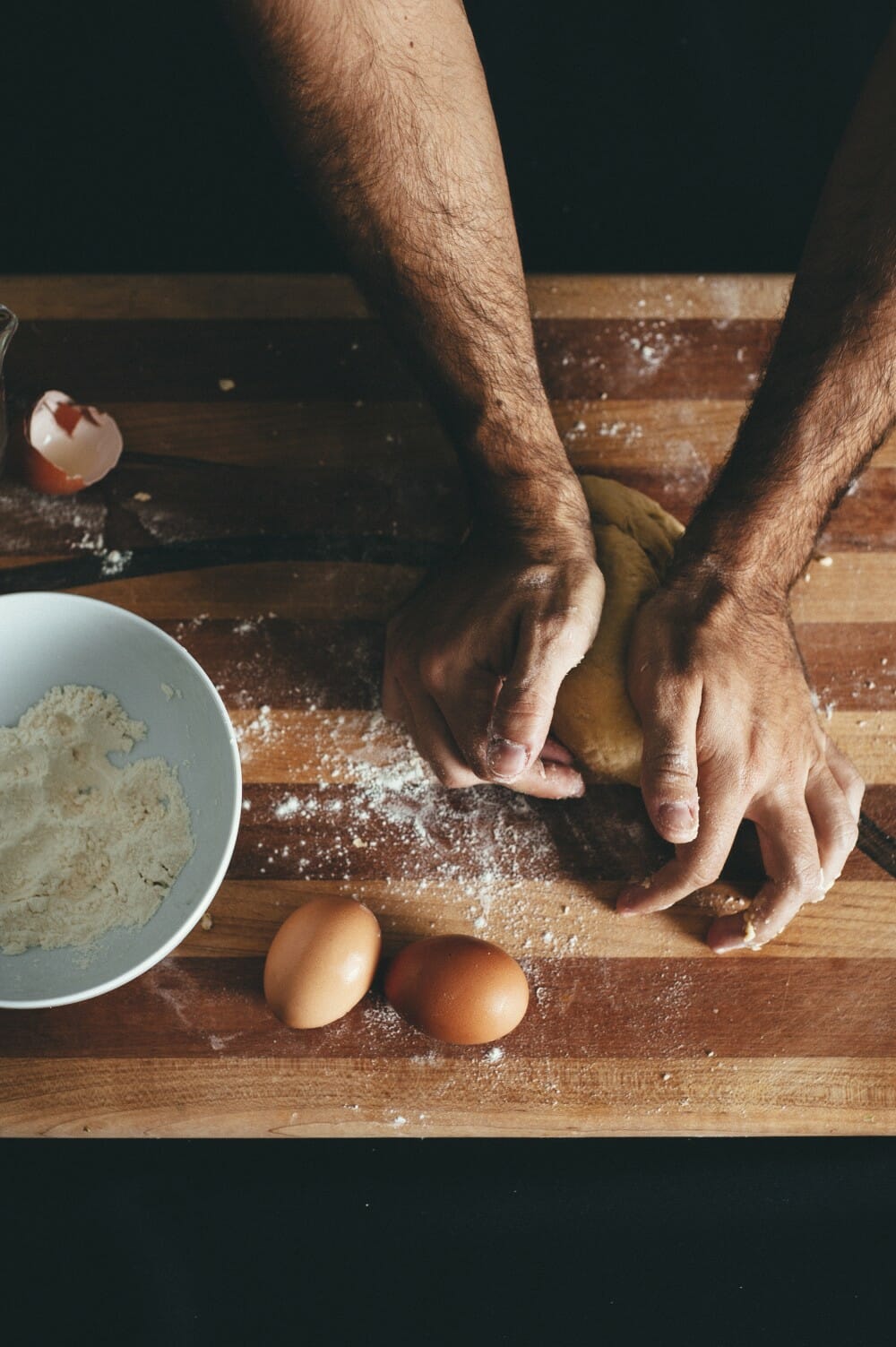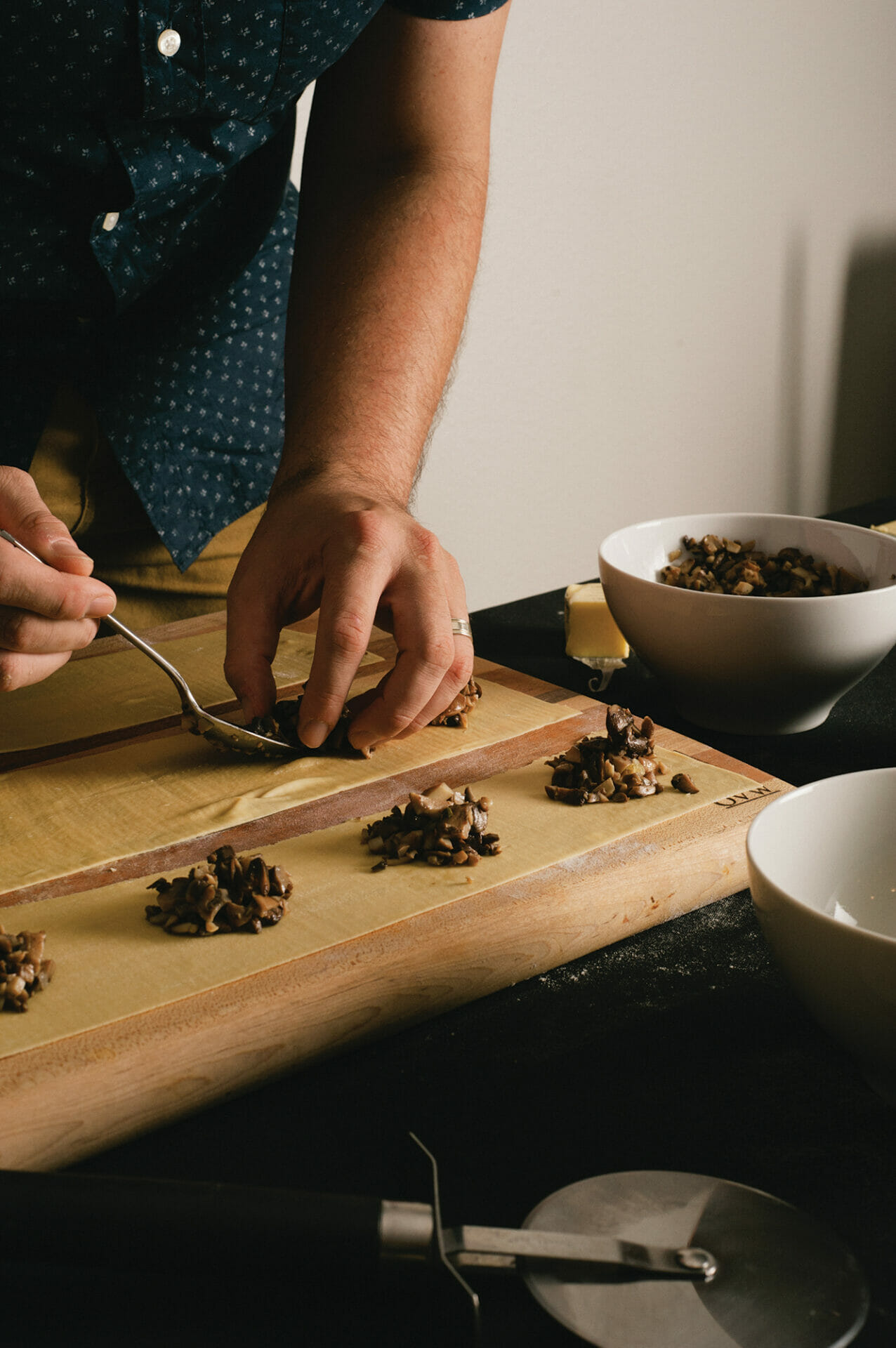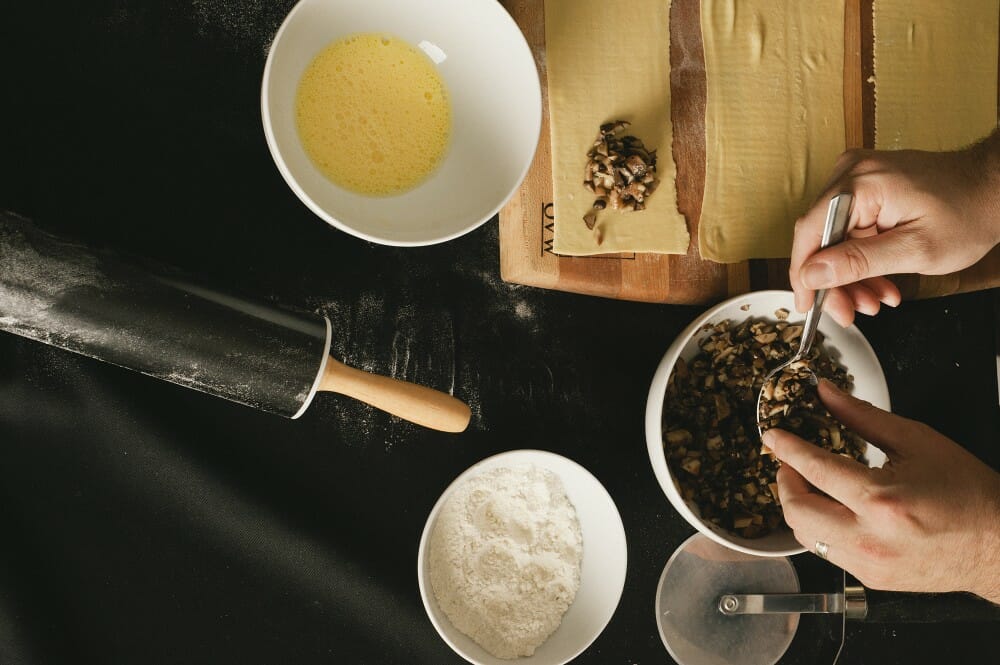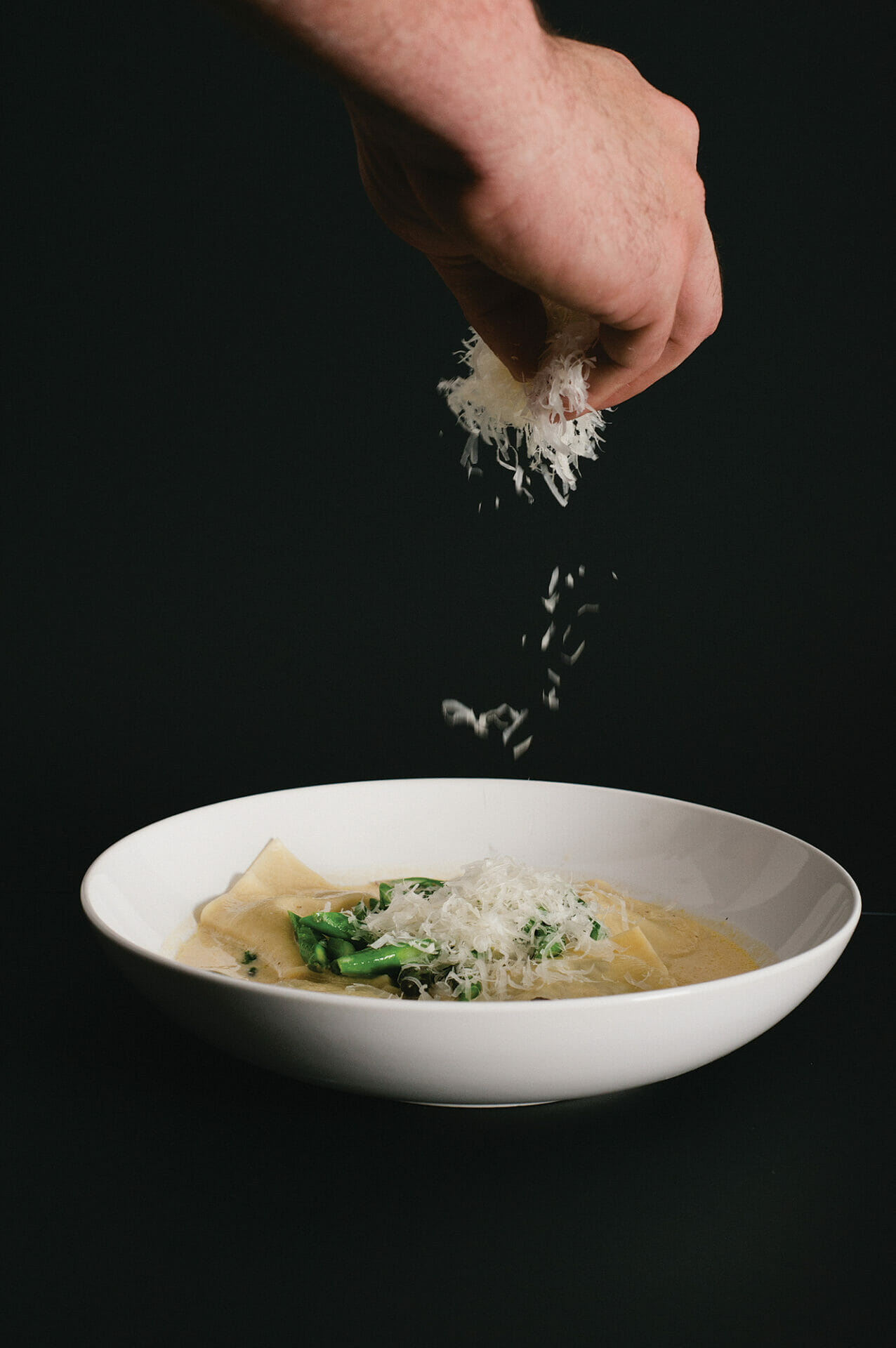Feeling adventurous this week? With a little extra time on your hands, you can mix things up and try this homemade pasta recipe.
Originally published in Issue 14
Photography by Philip Pietri
Written by Logan Crumpton and Philip Pietri
Start by making the dough.
 2 cups flour (have some extra off to the side for dusting)
2 cups flour (have some extra off to the side for dusting)
1/4 cup water
2 Tbsp. olive oil
2 eggs
Pour flour into a large bowl. Using your fingers, create a well in the middle of the flour large enough to hold the eggs. Break the eggs into a separate bowl and add olive oil. Pour the eggs and oil into the well. Using a fork, whisk the eggs in the well. When you see that the eggs are fairly well mixed, start working the flour into the egg mixture with your fork. It will combine into a messy dough. Using your hands, bring the dough together into a ball. If it’s too sticky, sprinkle some of the extra flour onto the dough. Transfer the dough onto a floured surface and knead vigorously for 8 to 10 minutes. The final product should be somewhat elastic and smooth. Put in plastic wrap (or under a large bowl) and let rest for
30 minutes.
In the meantime, make the mushroom filling.
MUSHROOM DUXELLE
2 pints sliced crimini mushrooms
3 Tbsp. unsalted butter
1 tsp. salt
1 sprig each rosemary and sage (whole)
2 bay leaves (whole)
3 garlic cloves (minced)

Heat a large skillet to medium-high. Place butter in the pan and let melt completely. Add mushrooms and season with salt. It’s very important not to move them around for the first few minutes so they can develop texture and color. After they’ve cooked 3-4 minutes, add rosemary, sage, bay leaves, and garlic. Sauté until mushrooms are completely cooked through and deep golden brown. Finish by adding a seasoning of salt to taste. Remove from heat, and discard the whole pieces of herbs. Allow to cool, then chop until the mushrooms are finely minced.
Set aside.

Once the dough has rested, cut in quarters and form into small rectangular shapes. To prevent sticking, coat each piece with a light dusting of flour. With a pasta maker or rolling pin, roll out the dough until it is 1/16 inch thick (the thickness of a coin). You will need two rectangular sheets of pasta of equal size to make one set of ravioli. Place about 1 Tbsp. of filling about 3 inches apart, along one sheet of pasta. Cover the filling with the second sheet of pasta, and use the side of your hand to firmly press in between each mound of filling to form the raviolis. Also, firmly press around all the edges to seal the pasta. Make sure all the seams are sealed off. Cut the ravioli into your desired shape, using a pizza, pastry, or cookie cutter, and then allow to dry on a floured cookie sheet for about 30 minutes.
During the interim, prepare the sauce.

ASPARAGUS VELOUTÉ
2 Tbsp. butter
2 shallots (minced)
3 cloves garlic (smashed)
1 sprig each rosemary and sage (whole)
2 bay leaves (whole)
1 quart vegetable stock
Juice from half a lemon
1 bunch of asparagus (trimmed and cut into 1-1/2-inch
pieces)
1 cup heavy cream
6 oz. parmesan cheese (whole, for grating)
 Melt butter in a medium sauce pan over medium heat. Add shallots, garlic, rosemary, sage, and bay leaves. Sauté until the shallots are softened and translucent. Add the vegetable stock. Reduce heat to a low simmer and cook for 20 minutes. Just before you’re ready to serve, add the lemon juice and asparagus, and cook an additional 3 minutes. Remove whole herbs; then whisk in cream. Keep on as low a heat as possible until ready to plate. You should end up with a thin yet creamy sauce.
Melt butter in a medium sauce pan over medium heat. Add shallots, garlic, rosemary, sage, and bay leaves. Sauté until the shallots are softened and translucent. Add the vegetable stock. Reduce heat to a low simmer and cook for 20 minutes. Just before you’re ready to serve, add the lemon juice and asparagus, and cook an additional 3 minutes. Remove whole herbs; then whisk in cream. Keep on as low a heat as possible until ready to plate. You should end up with a thin yet creamy sauce.
Grate 6 ounces of parmesan cheese for the final garnish.
In a large pot, drop raviolis into salted, boiling water, no more than eight at a time, for 4-5 minutes or until al dente (tender to the tooth). Remove and drain completely before placing into a shallow serving bowl. Spoon about a half cup of sauce per serving (four ravioli are enough for one person) over the pasta, and add a generous mound of parmesan on top.
TIPS
 If you don’t use all of your pasta right away, keep it from drying out by packaging it in plastic wrap and refrigerating it.
If you don’t use all of your pasta right away, keep it from drying out by packaging it in plastic wrap and refrigerating it.
We tested this particular pasta dough to see how it would fare when made into hand-cut noodles for our ramen broth, and it turned out quite nicely.
Remember, you may need to adjust your cooking time for the pasta, based on the thickness of the noodle. Different sizes require different cook times.
Definitely make it a point to have plenty of flour available if things get sticky.
